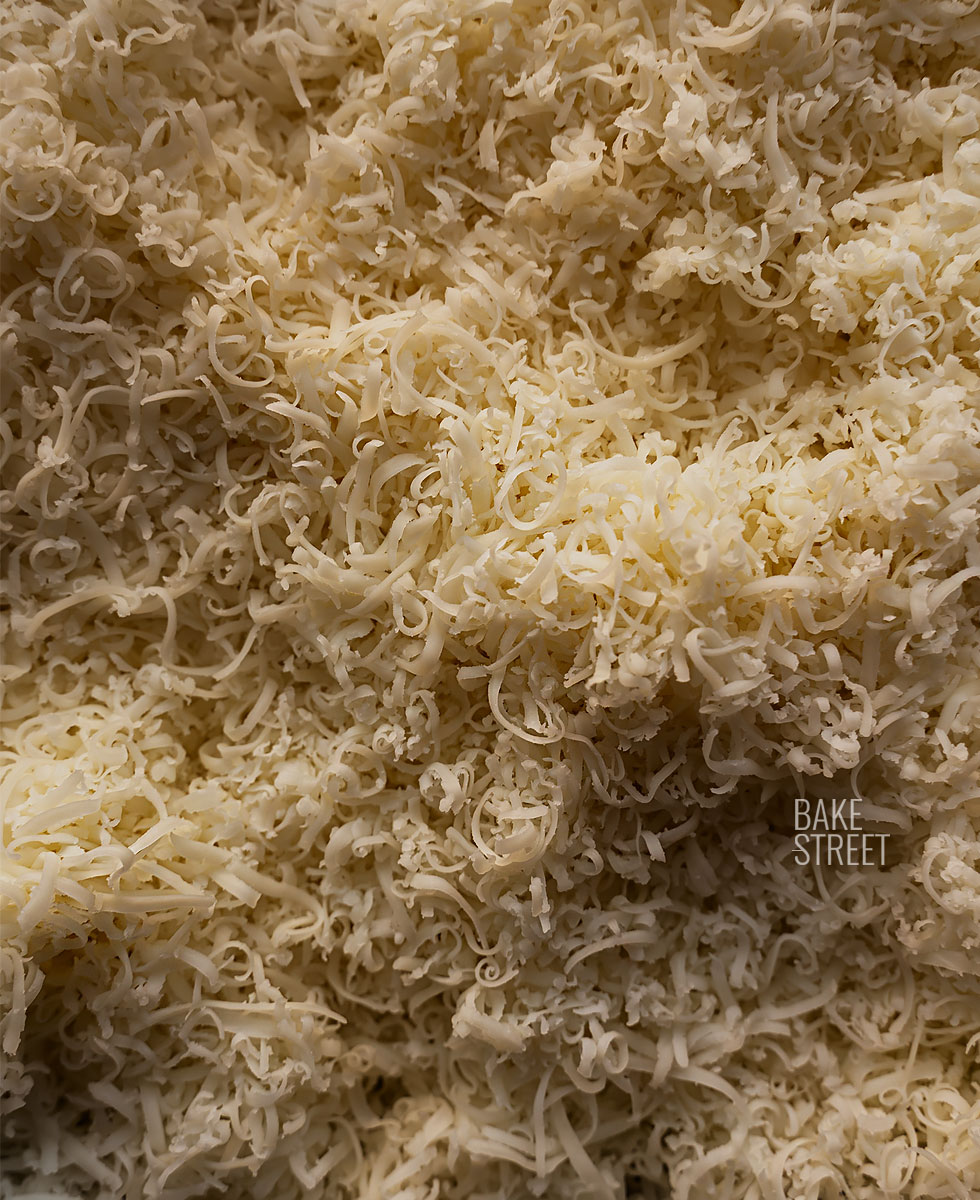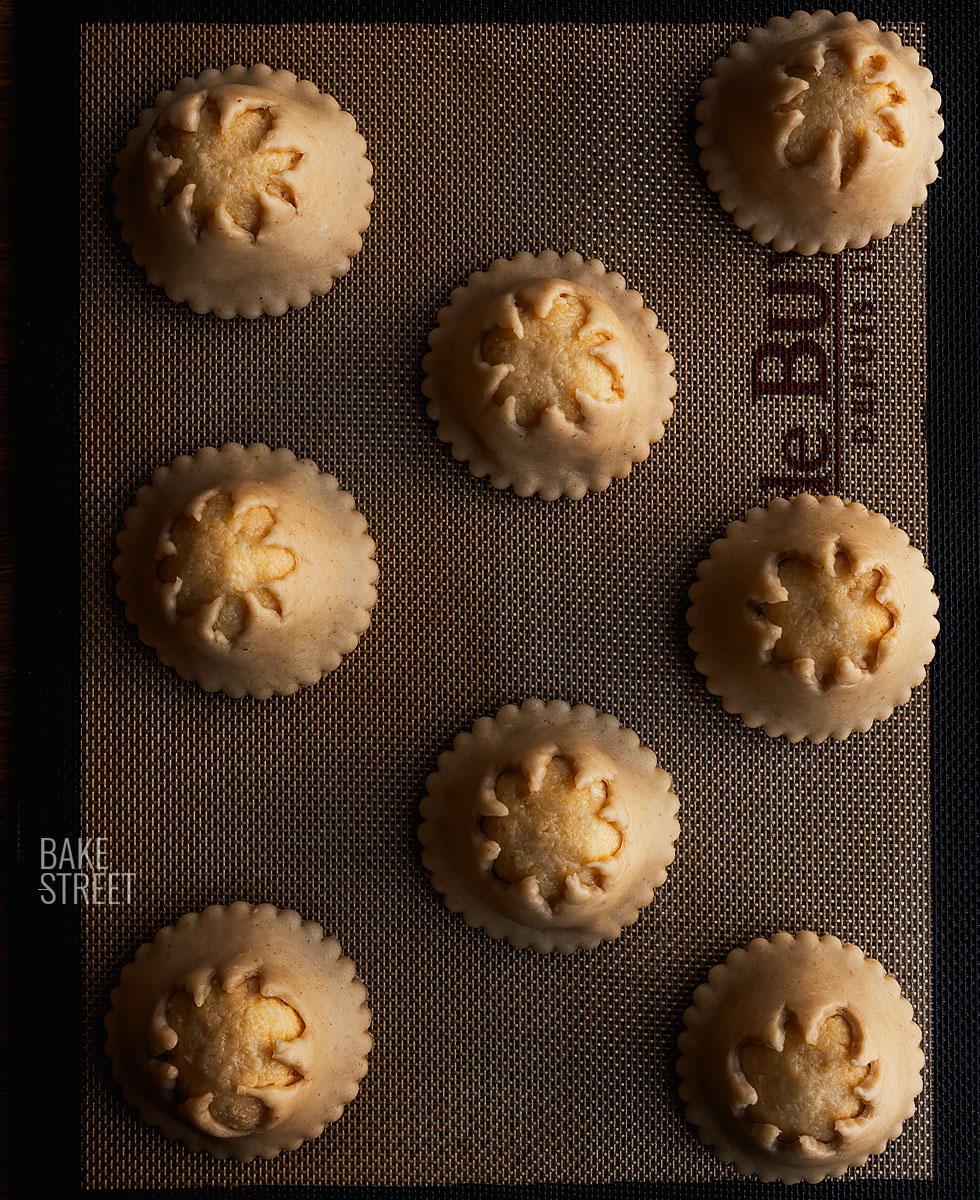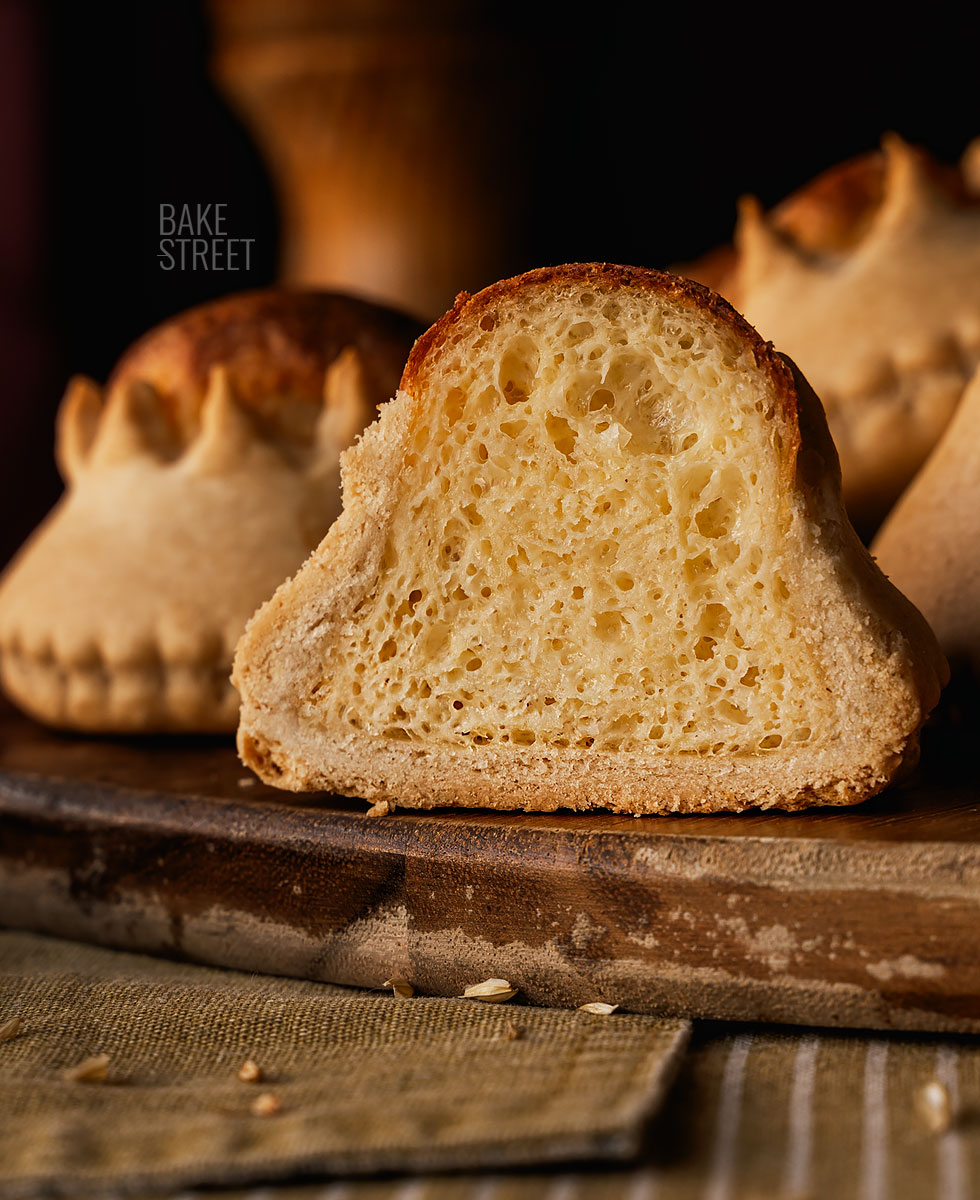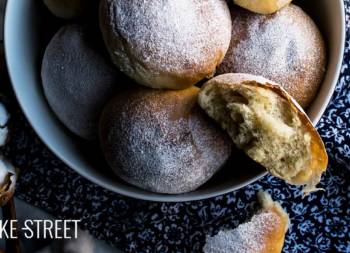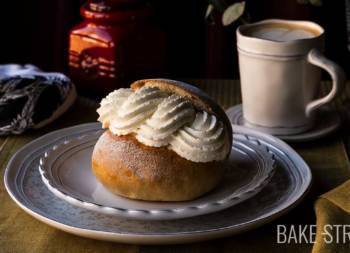
Flaons with Menorcan cheese
We start the recipes for Easter and, this time, I leave you a savory recipe that has been a discovery for me. Flaons with Menorcan cheese – Flaons amb formatge de Menorca also known as formatjades. Not only I had not tried them before, but also, I was completely unaware of the existence of this little savory pie.
What an absolute and complete marvel, really. I could not imagine that a recipe so simple to carry out, could give such an incredible, delicious and spectacular result. As well as attractive, at least for me. I find it a very striking piece, both on the outside and inside. But, above all, when you cut it…. It is an absolute beauty.
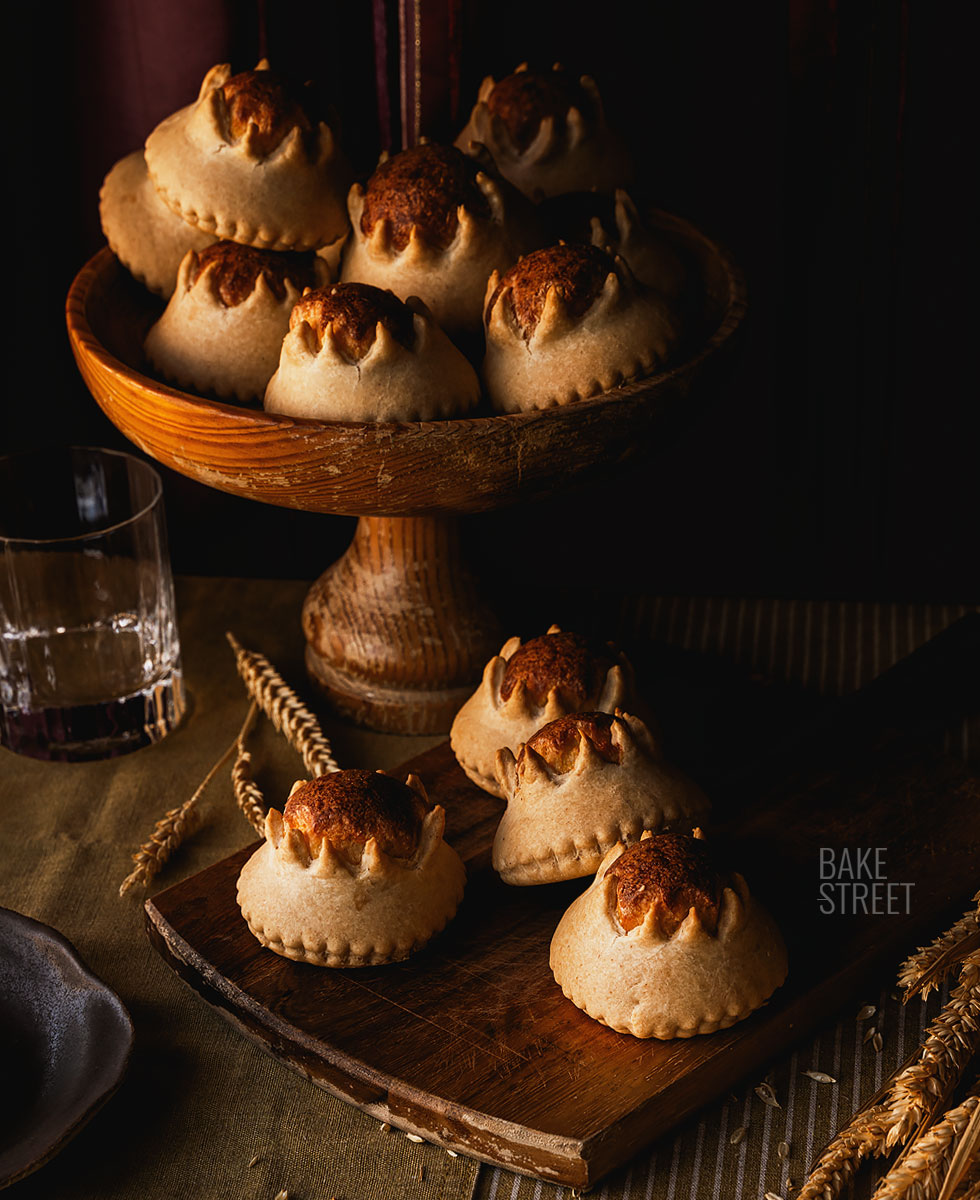
Flaons with Menorcan cheese: A journey through time and flavors
Flaons amb formatge de Menorca are a delicate salty pie that has captivated the island’s palates for several centuries. Its origin is shrouded in a halo of mystery that invites us to travel through its history and the culinary traditions of Menorca.
On the one hand, it is believed that it may be a millenary legacy since there are several theories about the genesis of this preparation. Some historians find similarities with the Menorcan “formatjades” and the nuragic recipes of Sardinia, suggesting a prehistoric origin dating back to the Talaiotic culture.
The Nuragic culture flourished over several centuries, coexisting with the great Mediterranean civilizations, such as the Egyptians, Phoenicians, Punics, Greeks, Etruscans and Romans. Through these civilizations, the Nuragic culture maintained commercial and cultural contacts, which is reflected in the artistic and religious representations that have survived to the present day.
This mysterious people is known mainly for its impressive stone towers, such as those found in the village of Tiscali, as well as for its dolmens, nicknamed the “Giant’s grave“, and several bronze statuettes.
However, their period of splendor came to an end with the arrival of the Phoenicians, with whom they coexisted for a time before the arrival of the Romans in Sardinia in the 2nd century AD.
Importantly, the Nuragic culture shares many traits with the Talaiotic culture of the Balearic Islands, as well as with the neighboring Torreano civilization of Corsica. These connections suggest a network of cultural and commercial exchange in the western Mediterranean during antiquity.
Arab and medieval influences.
The Arab presence in Menorca could also have left its mark on the recipe. Arab “flaons”, with meat or dried fruit fillings, bear a remarkable resemblance to Menorcan flaons. Likewise, the evolution of medieval recipes of pies and pastries filled with cheese could be another factor that contributed to the creation of this emblematic dish.
We have seen it on many other occasions, recipes originating in a specific place that reaches another place and is transformed according to its traditions and culture, but maintaining that base and essence from which they start.
Regardless of their origin, the Flaons amb formatge de Menorca have become a symbol of the culinary identity of the island. Their traditional preparation during Easter and their presence on Menorcan tables throughout the year confirm their cultural roots.
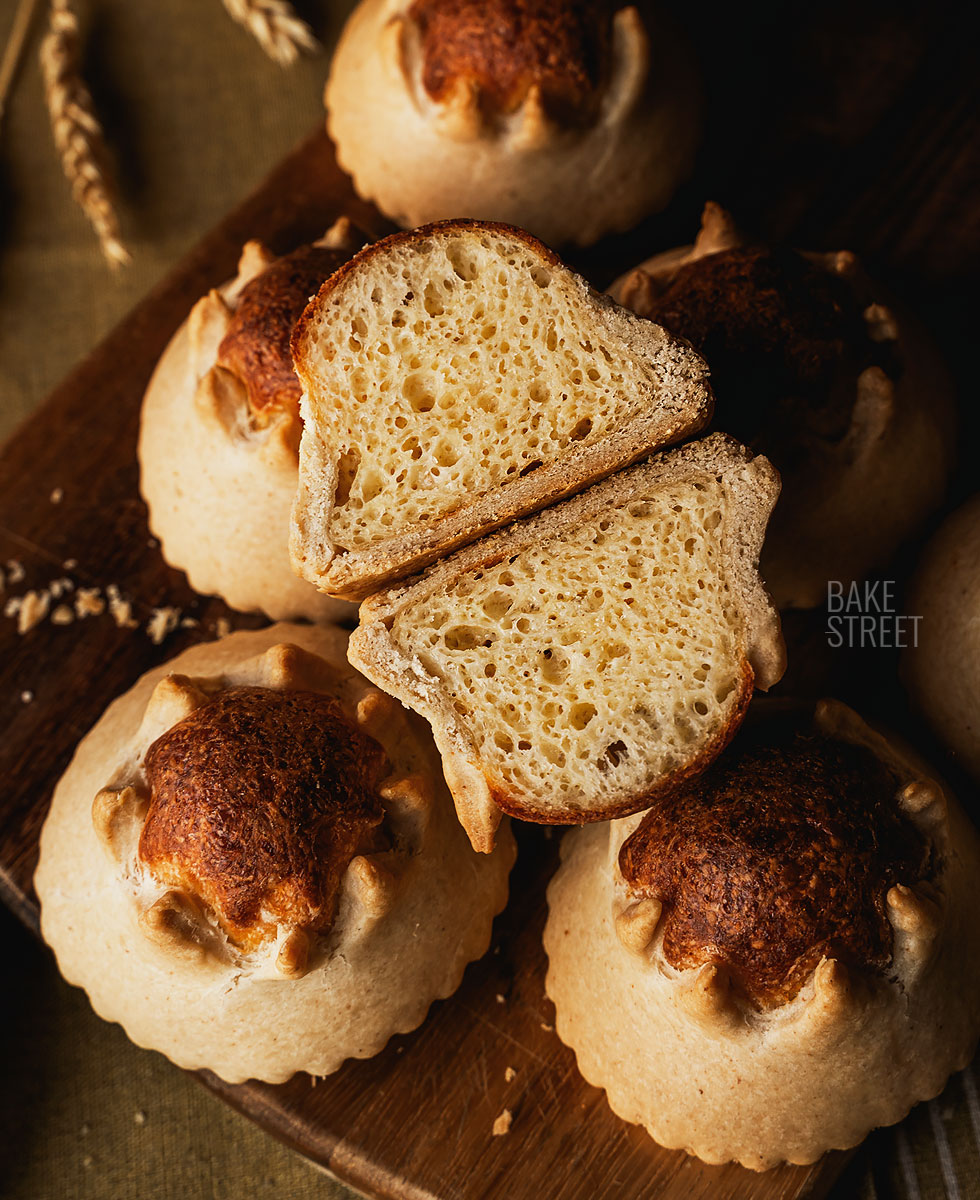
Variants and secrets of elaboration.
There are several variations on the traditional recipe, including fillings with sobrasada, cottage cheese, quince jelly or jam. Variants that, without a doubt, I have to try because they must be magnificent.
The magic of this elaboration takes place in the “sèu” dough (pork fat or lard). This ingredient brings a unique and characteristic flavor to the original version. Without forgetting the texture that has nothing to do if we elaborate it with butter or oil. Lard provides a silkier, flakier and smoother texture. In my humble opinion, wonderful. And, in case you have any doubts, the flavor is quite neutral. What you will notice the difference with other types of fats is its texture and smoothness.
A clear example is the famous ensaimada, which has a fabulous texture thanks to the use of lard in the process.
Flaons amb formatge de Menorca are a delight for the palate and a window to the rich history and traditions of the island. A culinary journey that invites you to discover the authentic flavors of Menorca.
Despite the fact that the island of Menorca is very small.
The same pastry can be called by different names depending on the town you are in. This small savory pastry can be found as “flaons“, “formatjades de formatge“, “cocas de formatge” or “crespells de formatge“. Despite the different names, it is the same recipe, with the same ingredients and, mostly, with a similar shape. Where we will find variations is in the type of mold with which the dough is cut, both the large mold and the central form (although in this case I have done it by hand).
This pasta has a history that dates back to ancient books, such as the “Libro de Sent Soví“, a compendium of medieval cooking by an anonymous author dating back to 1324, and the “Libre del Coch” by the master Robert de Nola, written in 1520.
There are other types of pastries with the same name, but different location. In Ibiza they make a dessert called flaó eivissenc, a sweet cake made with fresh cheese, eggs and mint among other ingredients and the dough has, in addition to the same ingredients, aniseed. In Castellón, there is a crescent-shaped sweet filled with cottage cheese, almonds, cinnamon and mistela, known as flaó de Morella.
Recipe Flaons with Menorcan cheese
Ingredients for18 pieces
DOUGH:
- 400 g bread flour
- 140 g lard
- 120 g water
- 10 g fresh yeast
- 2 g salt
CHEESE FILLING:
- 600 g tender cheese (this variety or similar to this)
- 3 large eggs
- 20 g olive oil
- 35 g bread flour
MATERIAL WE WILL NEED AND SHOWN IN THE VIDEO:
- bowls
- rolling pin
- grater
- pastry cutter
- curly round cutter about 8.5 cm
- curly round cutter, about 3.5 cm
- perforated trays
- silpat, perforated mat, Teflon or baking paper
Instructions
Prepare the dough.
- In a large bowl, add the flour together with the lard, the crumbled yeast, the salt and the water. I recommend you not to add the water all at once in case the dough is more hydrated than it should be. If you use the flour that I detail, you can add it all at once without worrying.
- Knead until you get a soft, smooth and homogeneous dough. I anticipate that it will take quite a while. In fact I recommend combining kneading with resting to make the process more bearable. Remember that resting helps in the kneading, the gluten continues to develop. In addition, it relaxes and makes the kneading more comfortable to carry out.
- Once you have the dough ready, put it in a bowl, cover with film and let it rest for 1 hour. This is more or less the time it will take you to prepare the filling. If it takes a little longer, that's fine. You will notice that the dough has risen a little.
Prepare the filling.
- In a large bowl, grate the cheese.
- Add the eggs together with the oil and flour. Mix until homogenized. At this point, you can taste the filling to check if you like the saltiness. This will depend on the cheese used. In my case, I did not add any salt.
- Form balls of 50 g/piece. Take a portion and roll it with your hands.

Shape flaons.
- Take two pieces of dough and stretch with the help of a rolling pin, you must stretch until you get a thin dough, but not transparent. The amount of dough to stretch, I did it by eye. Once I formed the first one, I had a reference for the following ones. An approximation, each cheese ball needs about 40-45 g of dough (base + cover).
- Place the cheese ball on one of the dough pieces.
- On the topping piece, with the help of a pastry cutter or other similar utensil, make a cut forming a star. In my case, as a guide so as not to make a very wide cut, I used a 3.5 cm diameter cutter to have a reference. If the cut is too large, it will not be held on the piece of cheese, but will fall to the sides.
- Place the piece of dough with the cut on top of the cheese piece and carefully adjust. Seal the base very well so that both pieces are joined together.
- With the large cutter, 8.5 cm, cut the dough and remove the scraps. Place the flaon on a perforated tray lined with mat, silpat, Teflon.... Cover with plastic wrap to prevent it from drying out while you form the next ones.
- All the scraps of dough are reused to form the next ones. I recommend letting them rest to make it easier to join them and stretch them again. If the gluten is tense, it will shrink the dough and the stretching process will be very laborious.
- In my case I used two trays, I placed 8 pieces in each one.

Bake.
- These pieces do not need a second rising or resting time. Once you have formed all the pieces, proceed to bake. Remember to bake the first tray you formed first.
- Preheat the oven to 355ºF/180ºC, heat up and down.
- Bake for 38-40 minutes.
- You will notice that as the pieces bake, the cheese ball will first lose volume, but later it will begin to swell and rise a lot. It will also acquire a nice golden color on top.
- I recommend that you do not open the oven during the cooking process, otherwise the filling will go down.
- Remove and let cool completely on a wire rack, although they are also delicious warm.
- Serve.

Notes
- To make the dough for these cakes I used W=200 flour or bread flour (10,5% protein), which can be easily found in any supermarket or department store. In my case I have used Zamorana Traditional flour.
- If you vary the type of flour, you will notice that the dough needs more water (if it has more strength or protein) or less water (if it has less strength or protein). The resting times are longer with flours that contain more protein or strength, they require more time to relax the gluten.
- I recommend not to omit, whenever possible, the Iberico pork lard. The softness, texture... has nothing to do if we elaborate it with another type of fat. It can be replaced by butter or oil.
- Remember that for every 3 g of fresh yeast, 1 g of dry yeast is used.

- It is a dough that requires a conscientious kneading. In fact, if you wish, you can use a mixer. It will save you a lot of work and the result will be extraordinary.
- Although it contains yeast, it does not undergo a long fermentation process. In fact, it is quite short in bulk fermentation and practically nil in the final fermentation. I believe that this leavening agent is used to give some air, and therefore less hardness, to the dough.
- Traditionally, soft cheese from Mahón-Menorca is used, but if you cannot find it or buy it, use a variety of soft/tender cheese that you like.
- To cut the pieces you can use any cutter you have at home that fits the size of the pie.
- It is important not to open the oven during the baking process to prevent the cheese pieces from falling.
- They can be stored in a zip bag for 4-5 days.

You can't miss to try these salty, beautiful and wonderful pies, Flaons with Menorcan cheese - Flaons amb formatge de Menorca. They are very easy to make, it doesn't require you to spend all day in the kitchen, and the result is stunning.
How much pleasure you feel when you cut the piewith a knife and see that extraordinary inside. It reminds a bit of a cheese soufflé, only the texture is a bit firmer. But the cut is a beauty... So airy and with a thin golden crust. The combination with the dough is amazing. Really, try it. You won't regret it.
By the way, I remind you that you can watch all my videos on my YouTube channel. If you subscribe and turn on the little bell, I will be eternally grateful!
I wish you a wonderful Sunday afternoon!
Lots of love,
Eva
